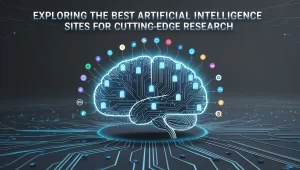Connected Cars: The Intersection of Automotive and Technology – In the ever-evolving landscape of the automotive industry, one of the most transformative developments is the advent of connected cars. These vehicles, equipped with advanced communication technologies, are reshaping the driving experience and paving the way for a new era of smart and interconnected transportation. In this article, we explore the concept of connected cars, their features, and the impact they have on the automotive ecosystem.

1. Understanding Connected Cars: A Symphony of Connectivity
Connected cars refer to vehicles equipped with integrated communication technologies that enable them to interact with the internet, other vehicles, infrastructure, and external services. These technologies create a networked ecosystem, transforming cars into intelligent entities capable of sharing and receiving data in real-time.
2. Key Features of Connected Cars
Connected cars come with an array of features that enhance safety, convenience, and the overall driving experience. Some prominent features include:
a. Telematics Systems:
Telematics systems gather and transmit data related to vehicle performance, location, and driver behavior. This data is invaluable for diagnostics, maintenance, and improving overall operational efficiency.
b. Infotainment Systems:
Connected cars boast advanced infotainment systems that provide a seamless blend of entertainment, navigation, and communication. Touchscreen displays, voice recognition, and integration with smartphones contribute to a richer in-car experience.
c. Vehicle-to-Everything (V2X) Communication:
V2X communication enables vehicles to communicate with each other and with infrastructure, such as traffic lights and road signs. This capability enhances safety by providing real-time information about road conditions and potential hazards.
d. Advanced Driver Assistance Systems (ADAS):
Connected cars often incorporate ADAS features, including adaptive cruise control, lane-keeping assistance, and collision avoidance systems. These technologies leverage connectivity to enhance safety and automate certain aspects of driving.
e. Over-the-Air (OTA) Updates:

OTA updates allow manufacturers to remotely update a car’s software, much like updating a smartphone. This ensures that vehicles receive the latest features, security patches, and performance improvements without requiring a visit to the dealership.
3. Connectivity Technologies: Enablers of the Connected Ecosystem
Several connectivity technologies form the backbone of connected cars, facilitating seamless communication and data exchange. These include:
a. Cellular Networks:
Connected cars rely on cellular networks to transmit and receive data. 4G and emerging 5G technologies provide high-speed connectivity, enabling real-time communication between vehicles and external servers.
b. Dedicated Short-Range Communication (DSRC):
DSRC is a communication standard specifically designed for V2X communication. It allows vehicles to exchange information, such as speed, location, and status, in the immediate vicinity, enhancing safety and coordination. (Read More : Electric Vehicles (EVs): Shaping the Future of Transportation 2035)
c. Wi-Fi and Bluetooth:
Wi-Fi and Bluetooth technologies facilitate connectivity within the vehicle, enabling devices such as smartphones and tablets to interface with the car’s infotainment system and other internal components.
d. Cloud Services:
Cloud-based services play a crucial role in connected cars by storing and processing large volumes of data. This includes maps, software updates, and user preferences, accessible from any connected vehicle.
4. Enhanced Safety and Security: A Pillar of Connected Cars
Connected cars contribute significantly to road safety by leveraging real-time data exchange. Features such as collision warnings, emergency braking assistance, and traffic information contribute to a safer driving environment. However, with increased connectivity comes the need for robust cybersecurity measures to protect vehicles from potential cyber threats.
5. The Rise of Connected Car Platforms: Ecosystem Integration
Connected car platforms are emerging as central hubs that integrate various services and applications into a unified ecosystem. These platforms facilitate seamless connectivity between the vehicle, the driver, and external services. They may include app stores, voice assistants, and personalized services tailored to the driver’s preferences.
6. Data Privacy and Ownership: Addressing Concerns
The widespread adoption of connected cars raises concerns about data privacy and ownership. Manufacturers must implement transparent policies regarding data collection, storage, and sharing. Striking a balance between personalized services and safeguarding user privacy is a critical consideration.
7. Future Prospects: Autonomous Driving and Mobility Services
Connected cars lay the groundwork for future advancements in autonomous driving and mobility services. The data generated by connected vehicles contributes to the development of advanced autonomous systems, and the connectivity infrastructure supports the emergence of new mobility solutions, such as ride-hailing and car-sharing services.
Conclusion: The Connected Future of Driving
In conclusion, connected cars represent a transformative leap* in the evolution of the automotive industry, ushering in an era where vehicles are not only modes of transportation but intelligent, connected entities. The intersection of automotive and technology has given rise to a plethora of features that enhance safety, convenience, and the overall driving experience. As connected cars continue to evolve, they are not just changing how we drive but paving the way for a connected future where vehicles play a central role in an intelligent, data-driven transportation ecosystem. The road ahead is marked by continued innovation, addressing challenges, and unlocking new possibilities for the connected future of driving.
Read More: Autonomous Driving Technology: Navigating the Road to Self-Driving Cars









2 thoughts on “Connected Cars: The Intersection of Automotive and Technology”
Comments are closed.